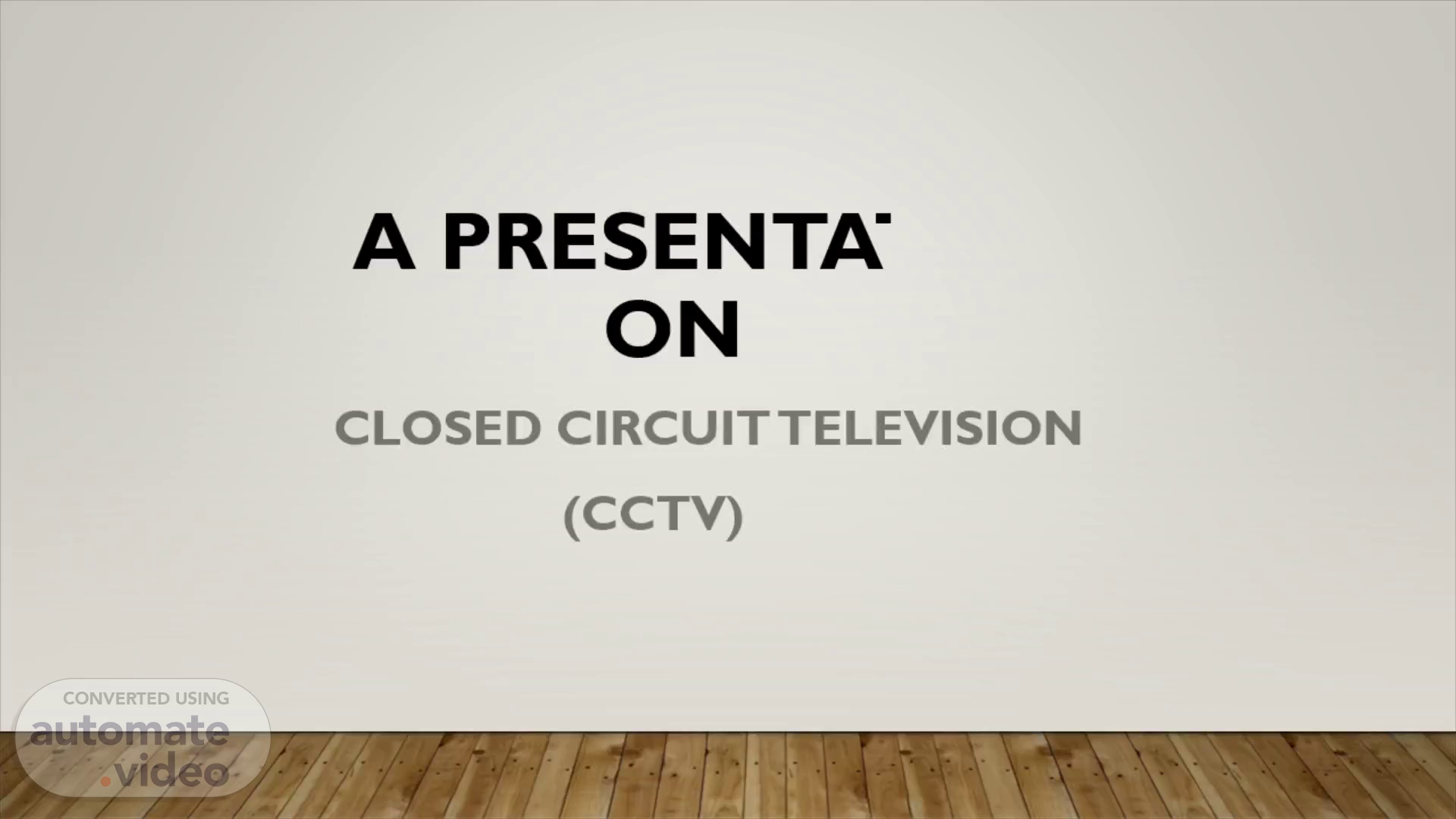Scene 1 (0s)
A PRESENTATION ON. CLOSED CIRCUIT TELEVISION (CCTV).
Scene 2 (6s)
Definition Uses Types of CCTV system Block diagram Types of CCTV lens Camera selection Elements of CCTV system Monitor Unit Video Recorders (DVR/NVR) Cables Storage device Applications.
Scene 3 (18s)
What is CCTV ?. Closed-circui t television CCTV is the use of video cameras to transmit a signal to a specific place, on a limited set of monitors. It differs from broadcast television in that the signal is not openly transmitted, though it may employ point to point (P2P), point to multipoint, or mesh wireless links..
Scene 4 (38s)
Uses of CCTV CCTV is commonly used for a variety of purposes, including; Maintaining perimeter security in medium-to-high secure areas &installations. Observing behaviour of incarcerated inmates and potentially dangerous patients in medical facilities. Traffic monitoring Building & ground security Overseeing locations that would be hazardous to a human , for example, highly radioactive environment. Obtaining a visual record of activities where it is necessary to maintain proper security, for example, in banks, casinos or airports..
Scene 5 (57s)
Types of CCTV system 1. Analog CCTV system Analog security cameras an analog video signal and transfer that signal over coax cable to Digital Video Recorder (DVR). Each camera may be powered by plugging in the power supply right at the camera or by using RG siamese cable or which bundles the video and the power cable. Digital/IP CCTV system IP stand for Internet Protocol, and basically refers to a digital video camera that can send and receive data via a computer network..
Scene 6 (1m 20s)
CCTV systems block diagram. ell * 001. .mera ra21..-v-c Camera4 Camera Camera2n—v-c Camera4 Monitor Remote PC Remote PC.
Scene 7 (1m 29s)
Types of CCTV camera Indoor camera Outdoor camera IR Day/Night camera Dome camera Bullet camera Hidden camera Pan Tilt zoom camera Fish eye camera.
Scene 8 (1m 43s)
Indoor Camera Indoor camera as it name suggests used for indoor security mechanism. These are suitable for security in homes, schools, offices, hotels etc....
Scene 9 (1m 54s)
Outdoor Camera Outdoor camera is used for outdoor places. They are mostly used for entry and exit points with limited night lighting. These cameras have hard shell vandal-proof casings..
Scene 10 (2m 6s)
IR day/Night Camera IR day/night camera are used for high alert security areas were surveillance needs to happed day and night These cameras are used by military personal, in parking a lots and high security zones. The cameras are ideal for outdoor surveillance application..
Scene 11 (2m 22s)
Dome Camera Dome CCTV Cameras . Dome Security Cameras are named for their dome -like shape. Cameras are installed inside a dark dome and are design in a way that they go unnoticed by the visitors. The camera can be rotated and tilted manually. Dome cameras are commonly used in surveillance systems inside of homes, casinos, retail stores, and restaurants..
Scene 12 (2m 41s)
Bullet Camera Bullet Security Cameras are a type video surveillance camera that is typically small and shaped like a rifle bullet shell. Cylindrical Outdoor use Installed inside pr otective casings, which protects against dust, dirt, rain and other harmful element..
Scene 13 (2m 55s)
PTZ (Pan-Tilt-Zoom) cameras PTZ cameras offer pan, tilt, and zoom capabilities, allowing them to rotate horizontally (pan), vertically (tilt), and adjust the focal length (zoom). This flexibility enables users to remotely control the camera’s movements and focus on specific areas or objects of interest. Remote Control: PTZ cameras can be controlled remotely through various methods, such as using a joystick controller, software interface, or mobile applications..
Scene 14 (3m 16s)
Connecting methods of PTZ camera. nudio oul DC 12V "Am Audio In Alnrrn Inl Oul Connecting interface Ø 220M' -)QQQQ Switc'l/Routor NC for tost.
Scene 15 (3m 25s)
rS•npc. Fish Eye Camera The fish eye camera is the single camera which allows you to record everything With a 180 or 360 degree panoramic view. Types of fish-eye lenses: There are primarily two types of fish-eye lenses: circular fish-eye and full-frame fish-eye. Circular fish-eye lenses capture a complete circular image within the frame, while full-frame fish-eye lenses cover the entire rectangular frame..
Scene 16 (3m 46s)
Types of cctv lens There are two types of lenses. 1. Fixed Fixed lens are those lenses where lens size doesn’t make change, all we can do is focus, we can’t join or zoom out Common sizes are 12mm, 0.8mm, 06mm, 04mm, 3.6mm, 2.8mm 2. Varifocal In varifocal lens size can be changed during the installation process and Zoom In and zoom out is possible Common sizes available are 2.5mm~8mm, 3.0mm~12mm, 5.0mm~50mm.
Scene 17 (4m 11s)
Camera Selection If we select the camera, we will consider about these categories..
Scene 18 (4m 23s)
Cameras CCIVDVR Power Supply Monitor (l R SURF 5101 HDMI/VGÅ/AVOJt 4th Router Mouse.
Scene 19 (4m 33s)
Monitor Unit The functions of the monitor is to display video images for viewing. The selection of monitors is as important to the quality of image as the selection of cameras, lenses and other components in the imaging chain..
Scene 20 (4m 52s)
Video Recorders (DVR/NVR) Video recorder is at the heart of the CCTV installation. They received, manage, store and record the video captured by the cameras. Video recorders are two types.
